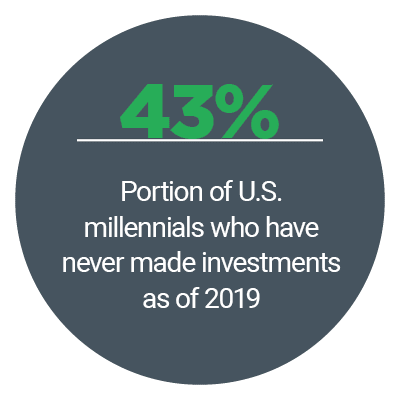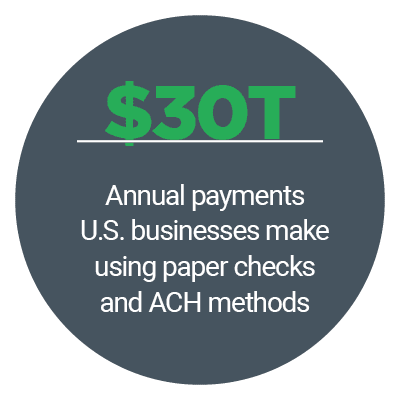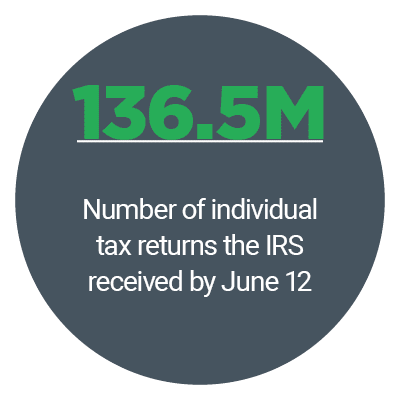
Rising unemployment rates and other economic factors driven by the ongoing pandemic have caused some consumers to tap into their long-term savings to stay afloat.
This has had a ripple effect on the broader investment industry, as banks and other financial firms look to meet customers’ needs while mitigating the pandemic’s effects on their operations.
These shifts are also making disbursement delays far less tolerable for consumers waiting for economic relief, causing hardships for firms that still rely on legacy disbursement methods, such as paper checks, to send out funds. Such payments take days to arrive and are sparking frustration among consumers, leading many companies to consider implementing digital methods that can zip these funds more directly into consumers’ hands.
The August Disbursements Tracker® examines the ways in which the pandemic is affecting the investment industry and what these impacts may mean for its future. It also analyzes why younger investors like millennials have remained reticent to invest and how the health crisis could affect this generation’s spending and saving habits, especially as legacy disbursement methods such as paper checks continue to fall out of favor.
Around The Disbursements Worl d
d
The United States government is examining how the pandemic has affected retirement and other savings accounts as its financial effects grow more dire for millions of the country’s residents. This has prompted U.S. Sens. Elizabeth Warren and Steve Daines to reintroduce the Retirement Savings Lost and Found Act, which would implement a digital system to help American consumers track their retirement savings and obtain more transparency into these accounts. This would enable them to keep track of funds that remain in their retirement or 401 (k) accounts when they switch jobs, ensuring they do not leave these funds behind. The move is intended to help Americans save for their eventual retirements, with one study finding that the nation’s residents are altogether about $7.7 trillion shy of the funds they need to do so.
Community bank Chesapeake Bank is also realizing the need for faster disbursements, announcing that would join the Real-Time Payments (RTP) network supported by The Clearing House (TCH). Its clients will have access to real-time payment capabilities that enable them to send and receive funds much more quickly and seamlessly than they could using the bank’s legacy payments infrastructure. Chesapeake Bank will also be able to send out government-sponsored stimulus checks and other aid via the network, allowing these funds to reach their recipients much faster than paper checks would.
 Some consumers seeking funds during the pandemic are weighing the short-term benefits of removing cash from their 401 (k) accounts with the long-term impacts that doing so will have on their retirement savings. One survey found that 23 percent of Americans have not saved enough for retirement, for example. Many consumers are also facing unemployment, and those who have been laid off could find that their employers have shut down their 401 (k) plans. These employers must then send out those funds to their former employees via check, and delays when doing so can further exacerbate the financial difficulties these consumers face. Employers are therefore examining the use of digital tools that could help them more easily send these funds to former workers as well as provide added transparency for their current employees.
Some consumers seeking funds during the pandemic are weighing the short-term benefits of removing cash from their 401 (k) accounts with the long-term impacts that doing so will have on their retirement savings. One survey found that 23 percent of Americans have not saved enough for retirement, for example. Many consumers are also facing unemployment, and those who have been laid off could find that their employers have shut down their 401 (k) plans. These employers must then send out those funds to their former employees via check, and delays when doing so can further exacerbate the financial difficulties these consumers face. Employers are therefore examining the use of digital tools that could help them more easily send these funds to former workers as well as provide added transparency for their current employees.
For more on these and other stories, visit the Tracker’s News & Trends.
How Digital Disbursements Are Becoming Critical In The Millennial Investing Industry
The investment industry is reeling after a rocky few months, attempting to recover after the pandemic’s initial impact sent stock values on a roller coaster. Some investors who want quick access to their dividends and other payments may find themselves stymied by paper check disbursements or other methods that take days to arrive, however. Relying on such methods to send investors’ funds can cause myriad issues, especially for millennials and other younger consumers who are used to the convenience of near-instant transactions in other facets of their lives.
In this month’s Feature Story, PYMNTS spoke with Brian M. Bond, founder of investment firm Leverage Financial Advisory, and Kai Stinchcombe, co-founder and CEO of True Link Financial, about why digital disbursement methods are fast becoming essential for the investment industry.
Deep Dive: Why Outdated Disbursement P rocesses Are Frustrating Would-Be Millennial Investors
rocesses Are Frustrating Would-Be Millennial Investors
Many consumers are struggling to stay afloat as they face mounting medical bills and income losses during the pandemic. Millennials have been hit especially hard, with one study finding that 5.6 million lost their jobs between February and April. These individuals are therefore searching for additional income sources, including potentially pulling from retirement or other investment accounts. Industry reliance on using paper checks or other outdated payment methods to send these funds can frustrate the members of this tech-savvy generation who have investment accounts, however.
This month’s Deep Dive reveals why paper check dividends and other outdated disbursement methods may be holding millennials back from the space as well as frustrating them when they do make investments.
About The Tracker
The Disbursements Tracker®, a PYMNTS and Ingo Money collaboration, is the go-to monthly resource for staying up to date on the trends and changes in the digital disbursements space.